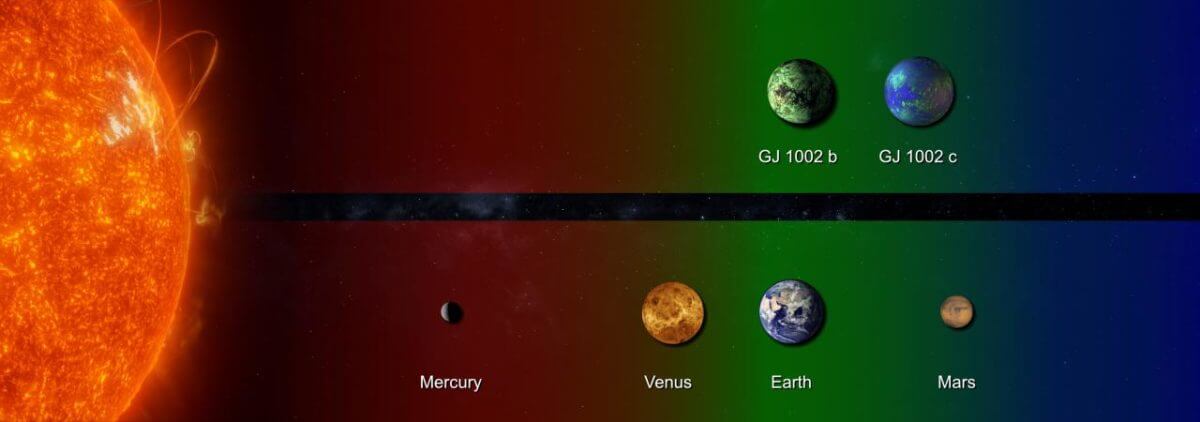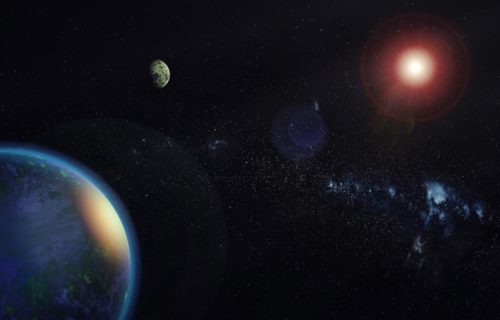TENERIFE, Spain — There might be alien life sitting right on our proverbial doorstep! Astronomers have discovered two Earth-like planets which sit in the habitable zone of their solar system. Moreover, these worlds are just 16 light years away from Earth!
The habitable zone of a solar system refers to the small area around a star where liquid water is capable of forming. Scientists say this “Goldilocks zone” is pivotal for there to be any chance of life as we understand it to form. In our solar system, Earth and Mars sit within the habitable zone.
“Nature seems bent on showing us that Earth-like planets are very common. With these two we now know 7 in planetary systems quite near to the Sun” explains Alejandro Suárez Mascareño, a researcher from the Instituto de Astrofísica de Canarias (IAC), in a media release.
The two planets orbit a tiny red dwarf named GJ 1002. This star is just one-eighth the mass of the Sun, making it a very cool and faint star. It also pushes the habitable zone much closer to GJ 1002 than the habitable zone in our solar system.
Although both of these potentially habitable planets have roughly the same mass as Earth, GJ 1002b, the inner of the two worlds, takes just 10 days to complete an orbit around the star. For GJ 1002c, the world farther away from the star, it takes just over 21 days to orbit the sun. For context, Earth takes 365 days to orbit the Sun — or a calendar year.

Scientists are eager to study these nearby worlds
With this solar system being less than 16 light years from our planet, astronomers believe they’ll be able to learn a lot about the atmospheres of GJ 1002b and GJ 1002c — possibly revealing whether they can support human life. To do this, the team says they’ll be looking at their reflected light and their thermal emissions.
“The future ANDES spectrograph for the ELT telescope at ESO in which the IAC is participating, could study the presence of oxygen in the atmosphere of GJ 1002c” notes Jonay I. González Hernández, an IAC researcher and co-author of the study.
Study authors made the discovery thanks to a collaboration between two high-tech instruments, ESPRESSO and CARMENES. The team says CARMENES observed GJ 1002 between 2017 and 2019, and ESPRESSO took over between 2019 and 2021.
“Because of its low temperature the visible light from GJ 1002 is too faint to measure its variations in velocity with the majority of spectrographs” explains Ignasi Ribas, a researcher at the Institute of Space Sciences (ICE-CSIC) and director of the Institut d’Estudis Espacials de Catalunya (IEEC).
CARMENES has a sensitivity over a wide range of near infrared wavelengths which is superior to those of other spectrographs that track variations in distant stars. Combined with ESPRESSO, researchers took measurements with an accuracy of only 30 cm/sec, not attainable using any other instrument in the world.
“Either of the two groups would have had many difficulties if they had tackled this work independently. Jointly we have been able to get much further than we would have done acting independently,” states Suárez Mascareño.
The findings are published in the journal Astronomy & Astrophysics.


If man could travel even 5 miles a second it would take over 592 thousand years to go 16 light years. Quit wasting time studying the universe. Study on fixing the planet science and tech have nearly destroyed.